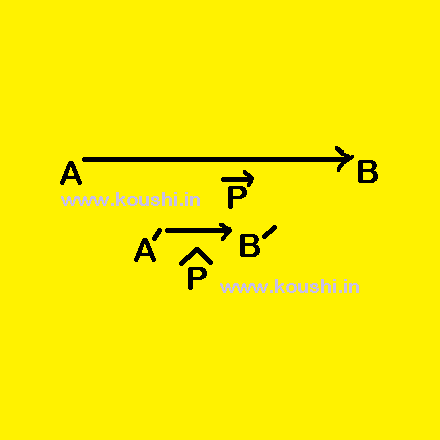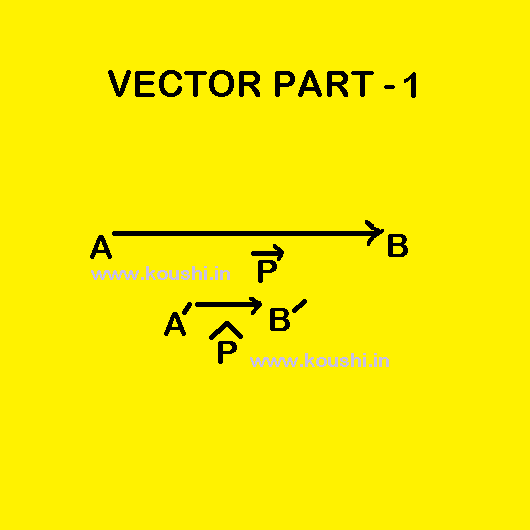Scalar: The quantities which are represented by magnitude and no directions and follow the ordinary algebra are called scalar quantity. Example: mass, volume, speed, density etc.
Vector: The quantities which are represented by magnitude and directions and follow a special type of algebra (vector algebra) are called vector quantity. Example: velocity, acceleration, force etc.
Representation of a vector: A vector can be represented by joining two points with an arrow. ![]() represents a vector where point A is the initial point or origin and point B represents the terminal point. Arrow is directed from origin to terminal point. Let us consider,
represents a vector where point A is the initial point or origin and point B represents the terminal point. Arrow is directed from origin to terminal point. Let us consider, ![]() is
is ![]() and the magnitude of
and the magnitude of ![]() is |
is |![]() | = |
| = |![]() | = P = AB.
| = P = AB.
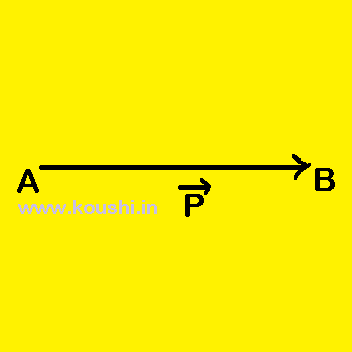
Classification of vector:
(i) Equal vector: If two vectors have equal magnitude and same direction then those vectors are called equal vector. Here ![]() (=
(= ![]() ) and
) and ![]() (=
(= ![]() ) are of same magnitude and same direction. So,
) are of same magnitude and same direction. So, ![]() =
= ![]() .
.
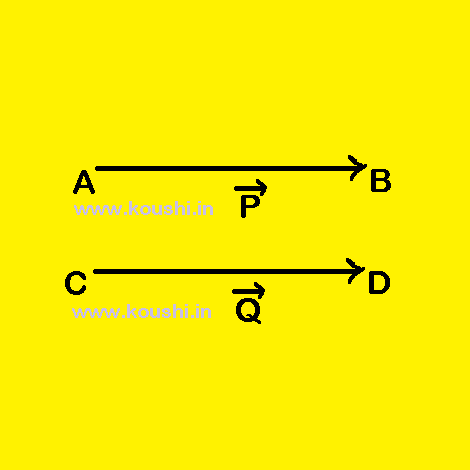
(ii) Opposite vectors: If two vectors have equal magnitude but opposite direction then those vectors are called opposite vector. Here ![]() (=
(= ![]() ) and
) and ![]() (= –
(= – ![]() ) have equal magnitude but opposite direction then
) have equal magnitude but opposite direction then ![]() = –
= – ![]() .
.
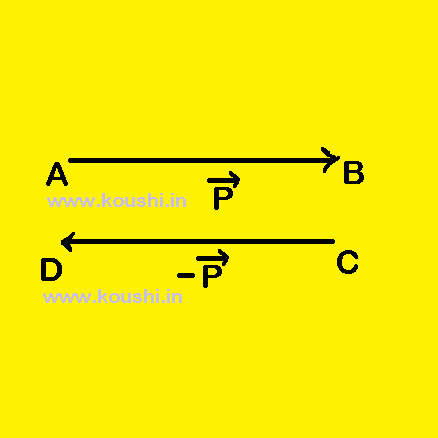
(iii) Collinear vectors: If all the vectors are parallel to each other whatever be their magnitude then those vectors are collinear vectors. Here ![]() ,
, ![]() and
and ![]() are parallel so they are collinear vectors.
are parallel so they are collinear vectors.
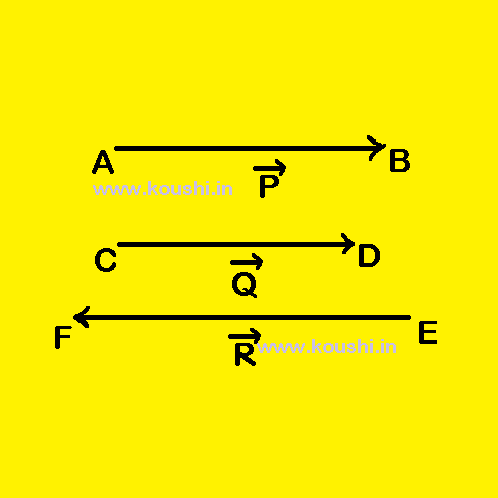
(iv) Null vector: The vector which having magnitude zero and the direction is undefined then the vector is called null vector.
(v) Orthogonal vector: Two vectors are said to be orthogonal if they are perpendicular to each other.
(vi) Unit vector: The vector which having magnitude one and the direction is towards the given vector is called unit vector. If ![]() is a vector then the unit vector
is a vector then the unit vector ![]() =
= ![]() .
.
If ![]() = x
= x![]() + y
+ y![]() + z
+ z![]() then the unit vector
then the unit vector ![]() =
= ![]() (where
(where ![]() ,
, ![]() and
and ![]() are the unit vectors along X, Y, Z axis respectively.)
are the unit vectors along X, Y, Z axis respectively.)
